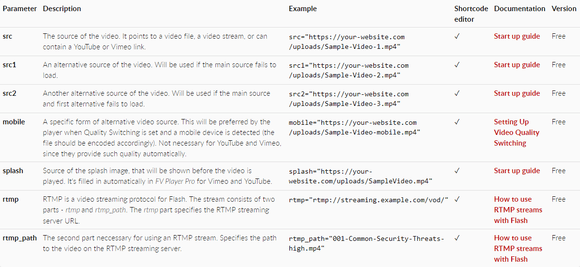You don’t have to be a seasoned veteran programmer to notice that controling our player is based on using shortcodes. Shortcodes are a part of the WordPress core and they are specifically designed for simplifying the use of code in the editor.
You can think of them as a set of pre-defined macros – a series of words, shortcuts and symbols, that have to be used with an appropriate syntax and will trigger a specific response. In this case it’s generating an HTML or other markup. Shortcodes in WordPress are easily recognizable as they are always using the square brackets – “[]“. For example, one of the default shortcodes in WordPress is [video].
FV Player’s shortcode usually looks like this:
[fvplayer src="https://vimeo.com/196881410" splash="https://i.vimeocdn.com/video/609485450_1280x720.jpg?r=pad" caption="Foliovision Promo Video"]
As you can see, the first part (fvplayer) tells WordPress to embed our plugin. The other parts (src="", splash="", caption="") are parameters that make the player do a specific action. For instance, the parameters in our example do this:
- src=”” – defines the source of the video. Here you put the URL of your video file
- splash=”” – here you put the URL of a splash image. Our player has added the URL automatically in the example above, as it can auto-generate links to splash images from Vimeo
- caption=”” – use this parameter to write the text you want to be shown with the video. Again, the caption above was auto-generated from the title of the video on Vimeo
As we improved the player over time, we added new features and they were handled by new parameters, so now there is over 40 that are available. Some of these are not in the shortcode editor, so they can only be used manually by typing them.
This is why we decided to list them all in one awesome guide, along with links to respective documentation and info of whether they are available in the free version, or require Pro or VAST license. The guide can be found here - List of Shortcode Parameters.

Example of one of the tables in the list of shortcodes
As you can see, the list is divided into six groups based on what do the parameters concern:
Every parameter in the tables contains a brief description, an example of how it can be used in the shortcode, a mark that indicates whether it’s available in the shortcode editor or not, and a link to the respective guide.
You can use this list to better understand how each parameter works and also discover some parameters that are unavailable in the editor and have a very specific use.
Leave a Reply